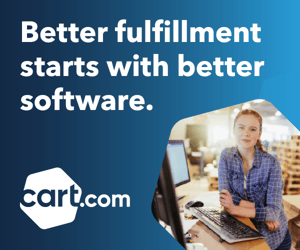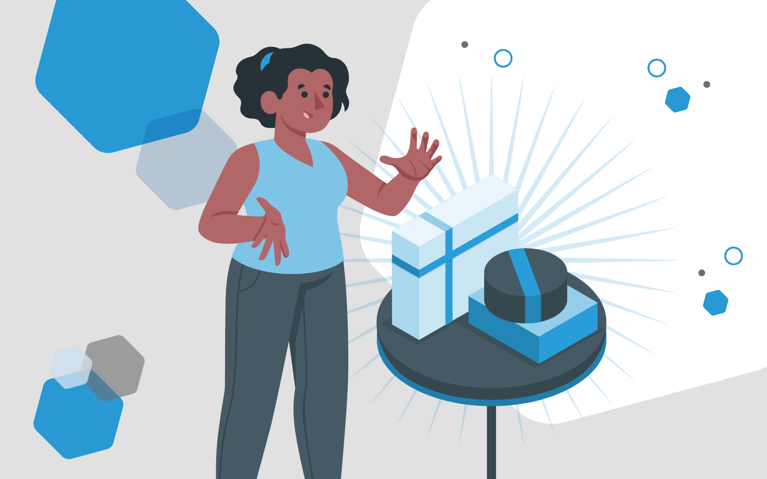In an ever-evolving industry, the state of the retail consumer is constantly shifting. Influenced by a multitude of factors like economic conditions and emerging trends, behaviors and preferences adapt. The resulting shift in ecommerce customer expectations creates a moving target for brands – making it a necessity to adjust strategies quickly to meet current demands.
Amidst this backdrop, brands grapple with a pivotal question: how can they effectively keep up with customer expectations? In this article, we’ll explore what influences consumer behavior and offer strategies that empower brands to understand and meet customer needs and expectations.
What affects ecommerce customer expectations?
It can feel like when you’ve adapted to meet a new consumer need or demand, an outside factor comes along and forces you to readjust. But this is the nature of retail and ecommerce. It’s an industry that is heavily influenced by outside factors, including:
- Technological advances: Innovations shape how customers interact with brands and expect seamless experiences across devices and platforms. In the past years, customers have come to expect things like Chatbots to answer questions 24/7 or augmented reality (AR) for virtual fitting rooms or room planning.
- Competitors: Competitors set benchmarks, driving expectations for pricing and similar or superior service. A prime example is Amazon’s fulfillment and shipping services, which have driven the expectation for fast and same-day delivery.
- Trends and preferences: Trends and preferences, influenced by social media, influencers and cultural shifts, impact and shape consumer expectations. To illustrate, packaging and unboxing videos, made popular on social media, are now a tool brands use to create brand awareness, create a great first impression and drive loyalty.
- Personalization: Customers expect tailored experiences based on their preferences, purchase history and behavior.
- Brand reputation: Positive brand reputation and reviews build trust and elevate expectations for consistent quality and service.
- The economy: The economy has a significant influence on customer expectations. Disposable income, consumer confidence, price sensitivity and product demand all impact behavior.
How to meet ecommerce customer expectations
Meeting ecommerce customer expectations is crucial for maintaining customer satisfaction, fostering loyalty and driving repeat business. When retail customers' needs and preferences are met, they are more likely to have positive experiences and become brand advocates, leading to increased sales and revenue. Failure to meet expectations can result in negative reviews, customer churn and loss of market share to competitors that better fulfill customer needs. Moreover, when you meet customer expectations and deliver exceptional experiences, you can gain a competitive edge while staying resilient and agile in a complex industry.
Here are seven strategies to better meet evolving ecommerce customer expectations:
1. Optimize the customer journey and experience
Optimizing the customer journey and experience is essential for businesses aiming to meet customer expectations. Brands can start by improving interactions in real time through journey orchestration. By leveraging data analytics and automation, companies can identify key touchpoints in the customer journey and tailor interactions accordingly. This ensures customers receive relevant and personalized content at every stage, enhancing their overall experience.
Another crucial aspect of optimizing the customer journey is prioritizing branding and personality. Strive to create a consistent brand image across touchpoints and channels, from website design to customer service interactions. Incorporating elements of personality into your branding helps build emotional connections with customers, leading to increased engagement and loyalty.
Personalization is also paramount in optimizing the customer journey. Gather data on your customers’ preferences, behavior and past interactions. Use the information to deliver personalized recommendations, offers and experiences. This creates a sense of exclusivity and relevance for customers, making them feel valued and understood.
Finally, optimize seamless omnichannel experiences to accommodate customers' preferences for interacting across multiple channels. Whether through social media, email or in-person, ensure consistency and continuity in your messaging and branding, which is key to achieving a cohesive customer experience.
2. Provide accessible customer support
According to data from Microsoft and published by HubSpot, 90% of U.S. shoppers report using customer service as a deciding factor in whether to do business with a company. HubSpot research also showed that 93% of customers are likely to shop again with a brand following a positive customer service experience. This makes providing accessible customer support crucial for meeting ecommerce customer expectations. Brands can do a variety of things to provide customer support.
One strategy is to offer diverse content formats, such as FAQs, tutorials and video guides, to address a wide range of customer inquiries. This allows your customers to access helpful information at their convenience, reducing the need for direct assistance.
Implementing chatbots is another effective way to enhance your customer support accessibility. Chatbots can quickly respond to common queries, provide instant assistance and escalate complex issues to human agents when necessary. This ensures prompt and efficient 24/7 support, catering to customers' diverse needs and schedules.
However, it's essential to strike a balance between automation and human interaction. While chatbots can handle routine tasks and inquiries, human agents play a critical role in addressing more complex issues and providing personalized assistance. By integrating chatbots with live chat features, you can offer seamless transitions between automated and human support, ensuring a smooth customer experience. Using multiple channels of support makes it more accessible, but it is also an excellent tool for identifying pain points and common customer challenges that you can address to better meet customer expectations.
3. Utilize post-purchase notifications
Customers want transparency and communication. The post-purchase stage is crucial for building trust, and that starts with knowing where their order is and when it will be delivered. Surveys show that 83% of purchasers expect updates about their order across stages, making post-purchase notifications crucial. Communication can be done through email, text or retailer apps and include:
- Order confirmation
- Shipping confirmation
- Tracking information
- Delivery confirmation
4. Offer a variety of fulfillment options and fast and affordable shipping
According to a recent article by Digital Commerce 360, “consumer expectations are the biggest challenge in ecommerce fulfillment.” Hybrid order fulfillment gives customers choices, helping to meet their needs based on lifestyle, timing and more. In an omnichannel world, consumers want to be able to buy online, pick up in-store (BOPIS) or receive items either cost-effectively or fast. Providing a variety of fulfillment and delivery options lets you meet customer expectations. It also enhances the overall experience, driving loyalty and retention.
5. Leverage feedback and social commentary
Actively “listening” to customer feedback and social commentary allows you to continuously adapt strategies and offerings to better meet evolving customer expectations and enhance the overall customer experience. Brands must create ways to collect and analyze this data by:
- Establishing channels for customer feedback, such as surveys, review platforms and social media.
- Analyzing feedback systematically to identify recurring themes and areas for improvement.
- Making data-driven decisions and prioritizing initiatives based on customer input.
- Engaging with customers directly by responding to feedback and addressing concerns.
- Leveraging social commentary to gauge public sentiment, identify trends and stay informed about industry developments.
- Adapting strategies and offerings based on feedback to meet evolving customer expectations and enhance the overall customer experience.
A good example of leveraging feedback and social commentary to meet customer expectations is listening to the growing conversation and consumer desires surrounding sustainability. More of today’s consumers expect brands to prioritize sustainability by minimizing their environmental impact, embracing ethical practices and promoting social responsibility. They want transparency about a brand's sustainability efforts, including eco-friendly materials, fair labor practices and ethical sourcing. Some consumers want to see a brand’s tangible actions, such as reducing waste, using renewable resources and supporting social causes, that demonstrate their commitment to sustainability. This is an opportunity for ecommerce retailers to listen to what their customer want and create practices that meet these expectations. This could be using more environmentally friendly packaging or embracing the circular economy.
Meet ecommerce customer expectations with Cart.com
Cart.com offers brands a variety of solutions to help meet their customers’ needs. Meeting your customers' expectations is essential for building trust, loyalty and long-term relationships. By understanding and exceeding their needs, you can differentiate your brand and drive repeat business and sustainable growth. Contact us today to learn how we can help you streamline operations and provide a seamless experience.

-1.webp?width=400)






